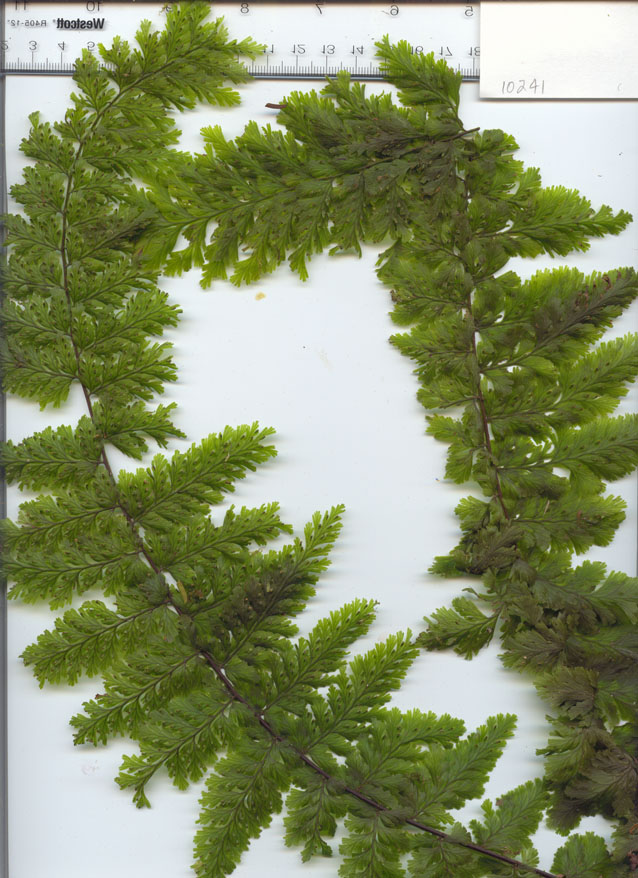Trichomanes
|
Family: Hymenophyllaceae |
Plants epiphytic or on rock. Stems long-creeping or short and erect, clothed in masses of dark brown hairs of 2 or more types, including multicellular gland-tipped hairs and elongate, sometimes branched and often multicellular, rhizoidlike hairs. Roots sparse or absent on creeping stems, numerous and wiry on erect stems. Leaves entire, lobed, or compound, 0.5--20 × 0.2--5 cm. Petiole short, wiry, often partially or wholly winged. Blade glabrous or with scattered, multicellular, gland-tipped hairs on veins; margins entire or minutely lobed, sometimes bearing dark stellate hairs (or orbicular scales, Trichomanes membranaceum ). Soral involucres conic. Sporangia sessile, formed at base of exserted bristle and carried outward by intercalary growth of bristle base. Gametophytes persistent, entirely filamentous or with proximal filamentous net producing aerial blades with gemmiferous apices. Gametophyte gemmae uniseriate. Trichomanes occurs primarily in tropical lowland and montane rainforests, a few species occurring in continuously moist, deeply sheltered habitats in temperate latitudes. Species outside the flora display a wide range of morphologies and habits. Some are terrestrial, some attain considerably larger size, and some have dimorphic fertile and sterile leaves. Filamentous gametophytes of Trichomanes can be distinguished from algae and from moss protonemata by their short cells with numerous discoid chloroplasts, by the presence of short, brown, unicellular rhizoids, and by their production of specialized gemmifer cells and gemmae.
Sori marginal, in tubular indusial pockets, the sporangia on a slender, bristle-like axis that may be exserted from the indusium. 275, warm reg. Gleason, Henry A. & Cronquist, Arthur J. 1991. Manual of vascular plants of northeastern United States and adjacent Canada. lxxv + 910 pp. ©The New York Botanical Garden. All rights reserved. Used by permission. |

